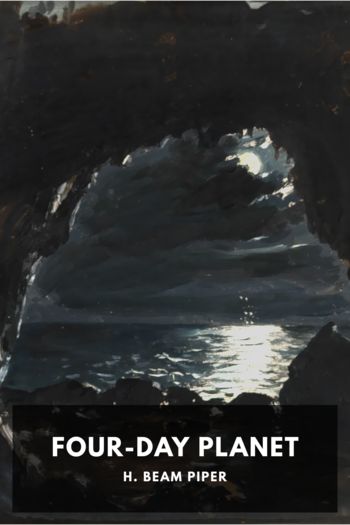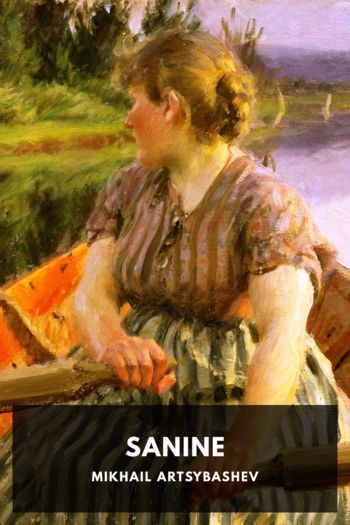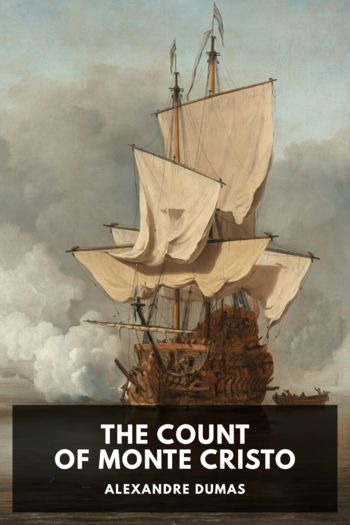Genre Other. Page - 284

Description
Reminiscent of old whaling stories, Four-Day Planet follows the story of Walter Boyd, a scrappy 17-year-old reporter working for his father at the Port Sandor Times. Walt gets tied up in the adventures of the sea-monster hunters on Fenris—a barely-habitable planet with a 2,000-hour day. The prized—and only—commodity on Fenris is tallow-wax, a miraculous material harvested from the dangerous seas of the planet.
While being set in a grand sci-fi universe, the book packs in more about intrigue, betrayal, and the grit required to survive on a backwater planet of the Federation. The book was later re-published as a “two-for-one” with Lone Star Planet (originally titled A Planet for Texans).

Description
Montague Rhodes James was a respected scholar of medieval manuscripts and early biblical history, but he is best remembered today as a writer of ghost stories. His work has been much esteemed by later writers of horror, from H. P. Lovecraft to Steven King.
The stereotypical Jamesian ghost story involves a scholar or gentleman in a European village who, through his own curiosity, greed, or simple bad luck, has a horrifying supernatural encounter. For example, in “ ‘Oh, Whistle, and I’ll Come to You, My Lad,’ ” a professor finds himself haunted by a mysterious figure after blowing a whistle found in the ruins of a Templar church, and in “Count Magnus,” a writer’s interest in a mysterious and cruel figure leads to horrific consequences. Other stories have the scholar as an antagonist, like “Lost Hearts” and “Casting the Runes,” where study of supernatural rites gives way to practice. James’ stories find their horror in their atmosphere and mood, and strike a balance in their supernatural elements, being neither overly descriptive nor overly vague.
This collection includes all the stories from his collections Ghost Stories of an Antiquary, More Ghost Stories, A Thin Ghost and Others, and A Warning to the Curious and Other Ghost Stories.

Description
As the Civil War bears down on a small North Carolina town, a tight-knit community of enslaved men and women is preparing for the coming battle and the possibility of freedom. Into this ensemble cast of characters comes Iola Leroy, a young woman who grew up unaware of her African ancestry until she is lured back home under false pretenses and immediately enslaved. Amidst a backdrop of battlefield hospitals and clandestine prayer meetings, this quietly stouthearted novel is a story of community, integrity, and solidarity.
Frances Ellen Watkins Harper was already one of the most prominent African-American poets of the nineteenth century when—at age 67—she turned her focus to novels. Her most enduring work, Iola Leroy, was one of the first novels published by an African-American writer. Although the book was initially popular with readers, it soon fell out of print and was critically forgotten. In the 1970s, the book was rediscovered and reclaimed as a seminal contribution to African-American literature.

Description
Not only was Hamlet one of William Shakespeare’s most popular works during his lifetime, it is also considered among the most powerful and influential works of world literature. “To be, or not to be,” a line from one of Hamlet’s soliloquies, is one of the most widely known quotes in modern English and has been referenced in countless works of literature, theater, film, and music.
During a dark winter night Horatio and a pair of watchmen encounter a ghost that resembles the late King of Denmark, the father of Prince Hamlet. After failing to converse with the ghost, Hamlet is brought to the site of the encounter. The ghost tells the story of his death. He was murdered by King Claudius, the dead king’s brother and Hamlet’s new stepfather. Hamlet swears to avenge him and kill Claudius.
This Standard Ebooks production is based on William George Clark and William Aldis Wright’s 1887 Victoria edition, which is taken from the Globe edition.

Description
Vladimir Sanine has arrived back to the family home where his mother and younger sister live, after several years away. While deciding what to do with his life, he meets up with a circle of friends and acquaintances, old and new, and spends his time as many carefree young adults do: in a whirl of parties, politics, picnics, and philosophical talk. But the freedoms of early twentieth century Russia are still held back by the structures of historical conduct, and their carefree attitudes erode when put in conflict with society’s expectations.
In Sanine, Artsybashev describes a group of young adults in a time of great uncertainty, with ongoing religious and political upheaval a daily occurrence. A big focus of the critical response when it was published was on the portrayal of sexuality of the youths, something genuinely new and shocking for most readers.
Artsybashev considered his writing to be influenced by the Russian greats (Chekhov, Dostoevsky, and Tolstoy) but also by the individual anarchism of the philosopher Max Stirner. Sanine was originally written in 1903, but publication was delayed until 1907 due to problems with censorship. Even publication didn’t stop Artsybashev’s problems, as by 1908 the novel was banned as “pornographic.” This edition is based on the 1915 translation by Percy Pinkerton.

Description
Affable and honourable, Lord Dawlish is the second poorest peer in England, relying on his income as a club secretary. Claire Fenwick, his beautiful fiancée, will not marry him until he has some money, so he draws up plans to travel to New York and make his fortune. When he unexpectedly comes into an inheritance, he attempts to give it to the person he believes is the more deserving recipient. This, however, proves more difficult than expected.
Sir Pelham Grenville Wodehouse was an English author and one of the most widely read humorists of the twentieth century. After leaving school, he was employed by a bank but disliked the work and turned to writing in his spare time. His early writing mostly consisted of school stories, but he later switched to writing comic fiction, creating several regular characters who became familiar to the public over the years, such as Bertie Wooster and Jeeves.

Description
Although known for her later experiments with style and structure, Virginia Woolf set out in her early novels to master the traditional form. Her second novel, Night and Day, presents itself as a seemingly conventional marriage plot, complete with love triangles, broken engagements, and unrequited affections. Beneath these conventional trappings, however, the book’s deeper concerns are resolutely subversive. The main characters—a quartet of friends and would-be lovers—come together, pull apart, and struggle to reconcile socially-prescribed norms of love and marriage with their own beliefs and ambitions.

Description
In Pollyanna Grows Up we follow the titular character as she “grows up” through a story told in two connected parts. The first part takes place in Boston when she is age 13, having just been rehabilitated from severe injuries sustained in an automobile accident. As she leaves the hospital, she is sent to stay with a nearby dowager, who has long withdrawn into grief, pining for her lost nephew. Pollyanna is to be her “cure.” After leaving Boston, Pollyanna leaves the country with her Aunt Polly and doesn’t return to Vermont until she is 20 years old.
While in Boston, Pollyanna observes her host’s isolation and depression, which sits in stark contrast with the opulence of her home and her material wealth. Meanwhile, naive, relentlessly positive, literal-minded Pollyanna, often oblivious to the structure of society around her, slowly comes to understand the dire, grinding poverty, isolation, and alienation that turn-of-the-century Boston was also home to. Human connection is a central theme of the book and Pollyanna begins to engage with broader cultural and moral questions of her society before departing the country.
In the second half of the book, Pollyanna acts as host to the friends she made in Boston. As such, she reconnects with them and puts them in touch with her friends and family in Vermont. As a part of growing up, Pollyanna must now address questions of how these relationships might change as her age and social status change. She must reconcile the sense of obligation she feels with her desires, and with the wants and needs of those around her. Old relationships are expanded, and new relationships are formed (or revealed) with each, in the end, more connected to all.

Description
Clarissa Harlowe, or The History of a Young Lady is one of the longest novels in the English language. Written by Samuel Richardson over a period of several years and published in 1748, it is composed entirely of letters. Though this may seem daunting, the novel is highly regarded and is considered by many critics as one of the greatest works of English literature, appearing in several lists of the best British novels ever written.
The novel tells the story of young Clarissa, eighteen years of age at the start of the novel. She is generally regarded by her family, neighbors, and friends as the most virtuous and kind young woman they know. But she is drawn into correspondence with Richard Lovelace, a well-born, rich young man regarded as something of a rake, when she attempts to reconcile a dispute between Lovelace and her rash brother. Lovelace, imagining this indicates her love for him, carries out a series of strategems which result in him essentially abducting her from her family, from whom Clarissa then becomes estranged.
Much of the correspondence consists of the letters between Clarissa and her close friend Anna Howe, and between Lovelace and his friend Jack Belford, to whom he confesses all of his strategems and “inventions” in his assault on Clarissa’s honor.
The novel is thus a fascinating study of human nature. Much of Lovelace’s actions and attitudes towards women are regrettably only too familiar to modern readers. And while Clarissa herself may be a little too good to be true, nevertheless she is shown as having some flaws which lead to a tragic outcome.
This Standard Ebooks edition is based on the 9-volume Chapman and Hall edition of 1902.

Description
Edmond Dantès is a young man about to be made captain of a cargo vessel and marry his sweetheart. But he is arrested at his pre-wedding feast, having been falsely accused of being a Bonapartist. Thrown into the notorious Château d’If prison, he eventually meets an ancient inmate who teaches him language, science, and passes hints of a hidden fortune. When Edmond makes his way out of prison, he plots to reward those who stood by him (his old employer, for one), and to seek revenge on the men who betrayed him: one who wrote the letter that denounced him, one that married his fiancée in his absence, and one who knew Dantès was innocent but stood idly by and did nothing.
The Count of Monte Cristo is another of Alexandre Dumas’ thrilling adventure stories, possibly more popular even than The Three Musketeers. Originally serialized in a French newspaper over the course of a year-and-a-half, it was enormously popular after its publication in book form, and has never been out of print since. Its timeless story of adventure, historical drama, romance, revenge, and Eastern mystery has been the source of over forty movies and TV series.